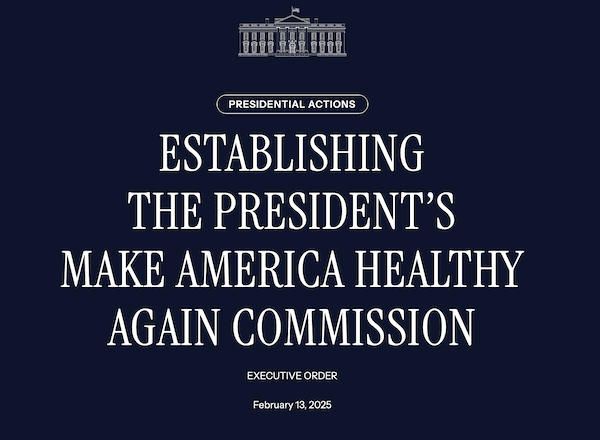In a move that mirrors authoritarian playbooks worldwide, the Trump administration’s latest executive order establishing the “Make America Healthy Again Commission” represents a concerning expansion of executive power masked as public health reform. This analysis examines how the order’s structure and language reveal deeper implications for democratic institutions.
The Veneer of Legitimacy
The executive order’s careful construction provides a facade of scientific legitimacy. It cites alarming health statistics and emphasizes “transparency,” “open-source data,” and “gold-standard research.” However, this veneer of scientific authority masks several concerning elements:
- Centralization of Power: The Commission’s structure places unprecedented control under executive branch leadership, with the HHS Secretary and Assistant to the President for Domestic Policy holding key positions. This consolidation of power echoes Viktor Orbán’s strategy in Hungary, where health policy became a vehicle for expanding executive control.
- Data Control: While promising transparency, the Commission gains significant authority over health data interpretation and dissemination. The mandate to “restore the integrity of science” could be used to delegitimize existing scientific institutions and replace them with politically aligned alternatives.
- Economic Leverage: The order’s scope extends beyond health into agriculture, housing, and education – critical sectors of the economy. This broad reach could enable the administration to exert control over vast segments of American life under the banner of health reform.
Linguistic Analysis and Power Dynamics
The order’s language deserves particular scrutiny:
- The slogan “Make America Healthy Again” deliberately echoes the “Make America Great Again” movement, linking public health to a broader nationalist agenda.
- Terms like “restore,” “integrity,” and “crisis” create a narrative of institutional failure that justifies dramatic executive intervention.
- The repeated emphasis on “ending” childhood chronic disease suggests unrealistic promises typical of populist movements.
Strategic Parallels to Authoritarian Consolidation
Several elements of the order align with known authoritarian strategies:
- Crisis Exploitation: The order leverages legitimate health concerns to justify extraordinary executive powers, similar to how Viktor Orbán used the COVID-19 pandemic to expand executive authority in Hungary.
- Institutional Capture: The Commission’s broad mandate to “restructure” federal responses to health issues could serve as a mechanism for replacing career officials with political loyalists.
- Information Control: The emphasis on “transparency” paradoxically creates new mechanisms for controlling what health data reaches the public, potentially enabling the suppression of unfavorable information.
Economic and Social Control Mechanisms
The order’s economic implications are particularly concerning:
- The mandate to work with farmers on food production could be used to create political dependency in agricultural communities.
- The focus on “expanded treatment options” and insurance flexibility could be leveraged to undermine existing healthcare structures.
- The broad scope covering environmental factors and “electromagnetic radiation” provides pretexts for extensive regulatory control.
Constitutional Concerns
While Section 7 includes standard language about not creating new enforceable rights, the order’s broad scope and vague mandates create numerous opportunities for executive overreach:
- The 100-day timeline for initial assessment suggests a rushed process that could bypass normal regulatory procedures.
- The Commission’s authority to “restructure” federal responses could be used to circumvent Congressional oversight.
- The broad mandate to address “corporate influence” could be selectively enforced against political opponents.
Conclusion: A Template for Authoritarian Consolidation
This executive order, while superficially focused on public health, provides a concerning template for expanding executive power. Its combination of crisis narrative, institutional restructuring, and information control echoes strategies used by authoritarian leaders to consolidate power under the guise of public welfare.
The order’s careful construction – with its emphasis on transparency and scientific integrity – makes it particularly dangerous, as it provides plausible deniability while creating mechanisms for significant power consolidation. As we’ve seen in other contexts, the gap between stated intentions and practical implementation often becomes the space where democratic institutions are gradually undermined.
Americans must remain vigilant about how this Commission’s powers are implemented and whether its stated goals of public health improvement serve as cover for more concerning political agendas. The historical pattern of using legitimate public concerns to justify authoritarian measures requires us to carefully monitor how this initiative develops.


